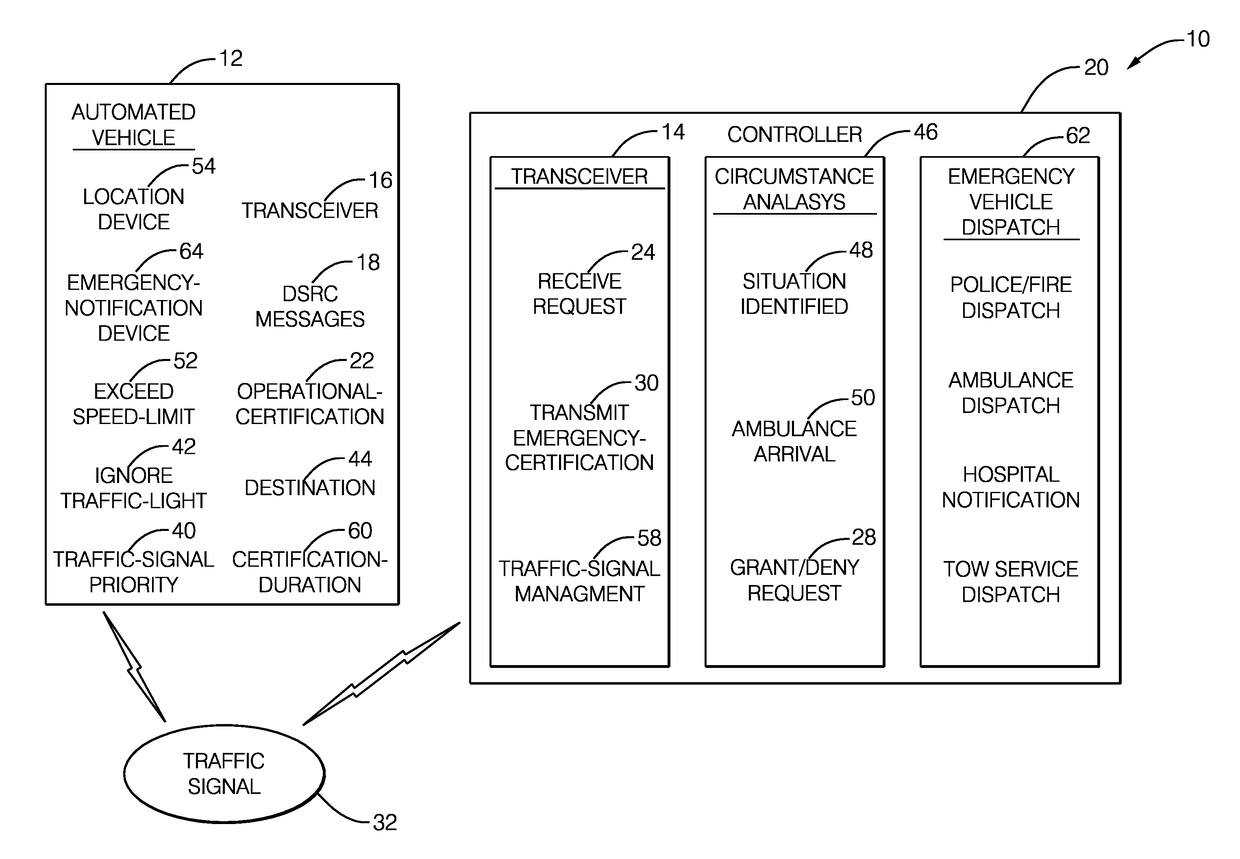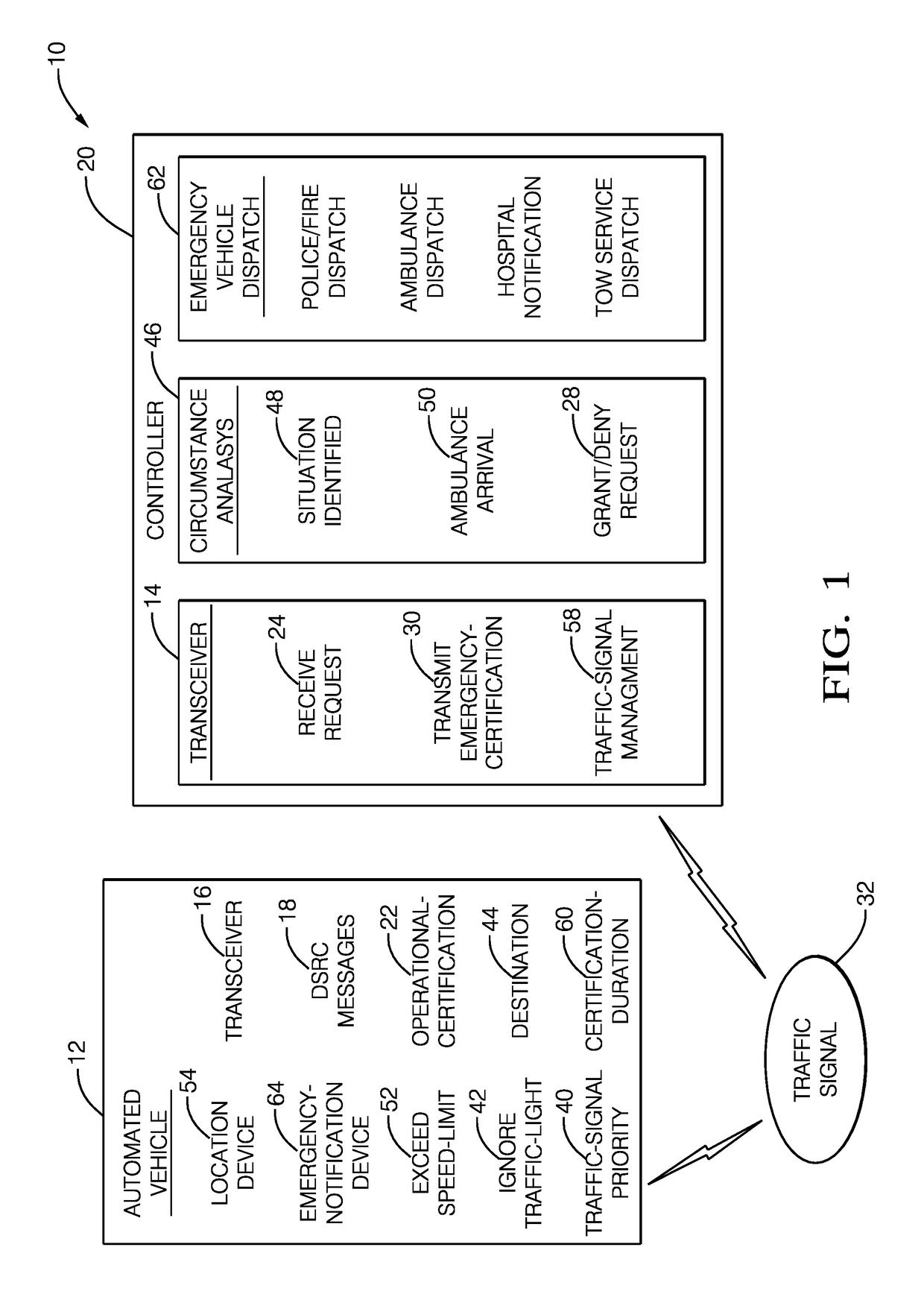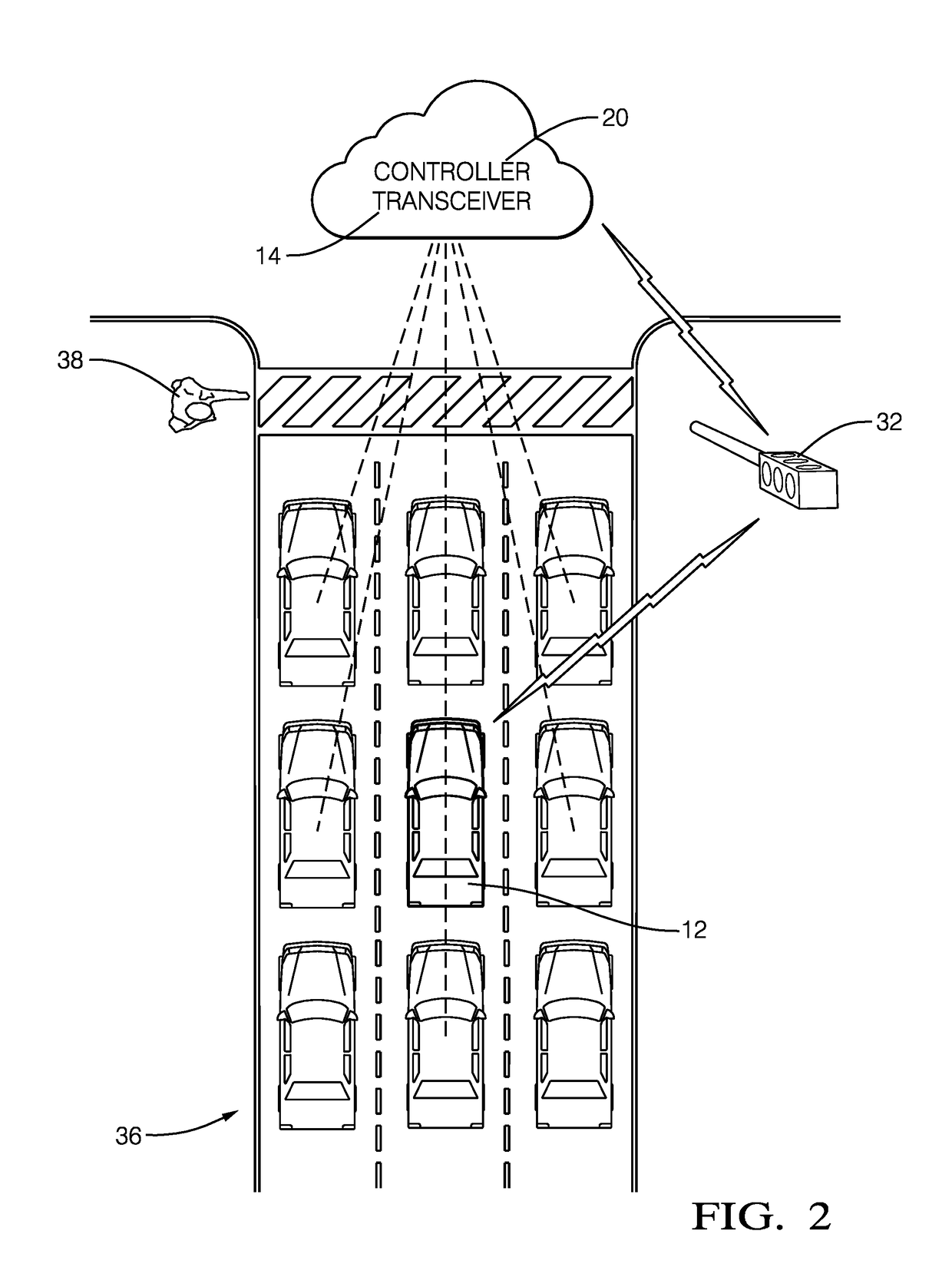Emergency communication system for automated vehicles
a technology for emergency medical treatment and communication system, which is applied in the direction of road vehicle traffic control, electrical equipment, instruments, etc., can solve the problems of increasing the time for emergency medical treatment for people who do not have privileges of private ownership vehicles, and achieve the effect of reducing travel times
- Summary
- Abstract
- Description
- Claims
- Application Information
AI Technical Summary
Benefits of technology
Problems solved by technology
Method used
Image
Examples
Embodiment Construction
[0010]FIG. 1 illustrates a non-limiting example of an emergency communication system 10, hereafter referred to as the system 10, which is generally configured for by an automated-vehicle 12. While the examples presented herein may seem to be generally directed to instances when the automated-vehicle 12 is being operated in an automated-mode, i.e. a fully autonomous mode, where a human operator (not shown) of the automated-vehicle 12 does little more than designate a destination, it is contemplated that the teachings presented herein are useful when the automated-vehicle 12 is operated, or is only configured for operation, in a manual-mode. While in the manual-mode the degree or level of automation may be little more than, for example, illuminating an indicator when another vehicle is present in a so-called blind-spot of the automated-vehicle 12, providing turn-by-turn route guidance to a destination, or providing braking assistance to a human operator who is generally in control of ...
PUM
 Login to View More
Login to View More Abstract
Description
Claims
Application Information
 Login to View More
Login to View More - R&D
- Intellectual Property
- Life Sciences
- Materials
- Tech Scout
- Unparalleled Data Quality
- Higher Quality Content
- 60% Fewer Hallucinations
Browse by: Latest US Patents, China's latest patents, Technical Efficacy Thesaurus, Application Domain, Technology Topic, Popular Technical Reports.
© 2025 PatSnap. All rights reserved.Legal|Privacy policy|Modern Slavery Act Transparency Statement|Sitemap|About US| Contact US: help@patsnap.com



